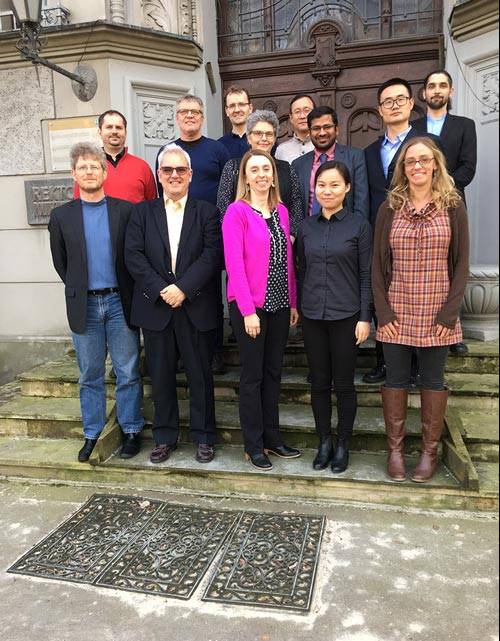International Collaboration To Bring Wind into the Distributed Energy Mainstream
In the not-too-distant past, spotting a solar panel on a rooftop or powering a small health center in a rural community far away from the grid was a rare occurrence. Fast forward a decade and the once-rare sighting is now ubiquitous. The on-site, distributed solar energy boom is powering everything from single-family homes to entire industries.
Could that successful model be applied to wind energy?
The International Energy Agency Wind Technology Collaboration Programme (IEA Wind) has convened researchers from around the world to help address the challenges that are keeping wind energy from providing similar services. This team of global experts, led by researchers from the National Renewable Energy Laboratory (NREL) and the Pacific Northwest National Laboratory, is studying how wind energy can benefit distributed energy systems under IEA Wind Task 41, “Enabling Wind to Contribute to a Distributed Energy Future.”
“Right now, roof-mounted solar is becoming common across the United States,” said NREL Deployment Manager Ian Baring-Gould, who serves as the technical director and co-lead of the IEA Wind project. “Our hope is this IEA Wind research will lead to a similar level of affordability and flexibility for smaller-scale, localized wind installations. We want to increase the reach of this clean energy technology.”

IEA Wind Task 41 team members pose during a break from the project’s kickoff meeting in 2019. Team lead Ian Baring-Gould is in the first row, far left. Photo courtesy of IEA Wind Task 41
While innovations have significantly decreased installation and operating costs for utility-scale wind power plants, smaller-scale distributed wind systems have not experienced the same cost reductions, limiting wind’s role in the developing distributed energy market. At the same time, utilities, communities, and nations are looking to distributed generation as an effective way to meet future energy needs.
To become cost competitive, distributed wind technologies will require a wide range of technical and nontechnical advances.
Through this IEA Wind work, researchers are examining a broad spectrum of solutions involving wind turbines deployed in distributed applications in behind-the-meter, in-front-of-the-meter, microgrid, and off-grid applications, and in combination with other distributed energy and energy storage technologies. Turbine sizes under consideration range from small wind turbines to multimegawatt, large-scale turbines deployed in small numbers closer to loads.
NREL conducted work on the forthcoming balance-of-station model for distributed wind applications. The model allows for a more structured comparison of the levelized cost of energy impacts of different foundation and installation strategies and solutions. Recent efforts focused on megawatt-scale distributed applications, but future efforts will include distributed applications as small as 20 kilowatts.
“We’re already gaining a better understanding of the technical requirements and marketplace realities,” Baring-Gould said. “We’re optimistic that this will lead not just to cost savings opportunities, but also to an entirely new model for wind installations.”
A Global Effort
To expand distributed generation possibilities for wind worldwide, the 4-year effort brings together research organizations from 11 participating countries. In addition to the United States, IEA Wind project participants include representatives from Austria, Belgium, Canada, China, Denmark, Greece, Ireland, Italy, Korea, and Spain, and the list of interested countries continues to grow.
The team has already completed an assessment of the current international standards for small wind turbines through a series of industry stakeholder sessions. A detailed international research plan will be developed to build the research case for updating international standards following meetings in Asia and North America. A distributed wind data catalog is also being developed, which will make information on distributed wind operational data more readily available for future international collaboration.
Learn more about NREL’s wind research.
Last Updated May 28, 2025
